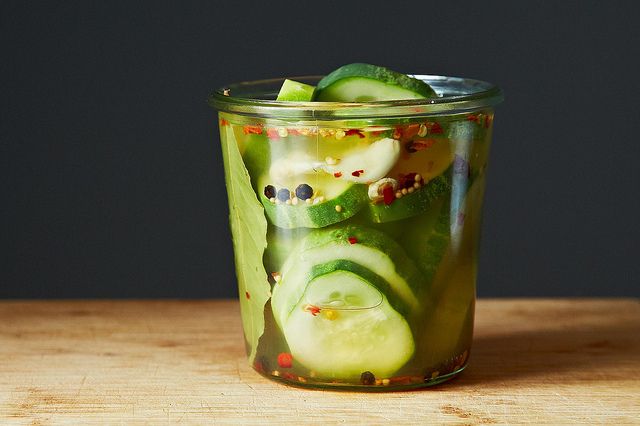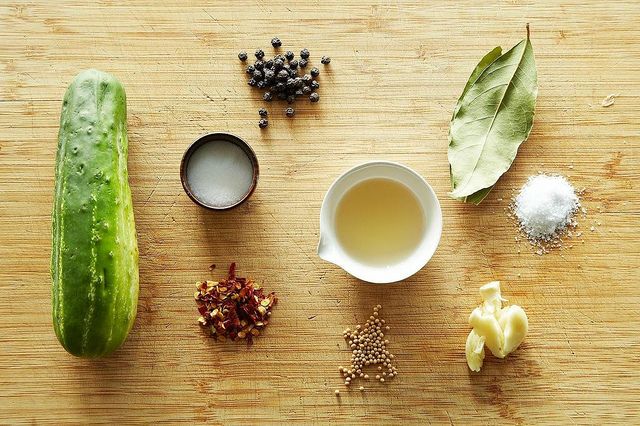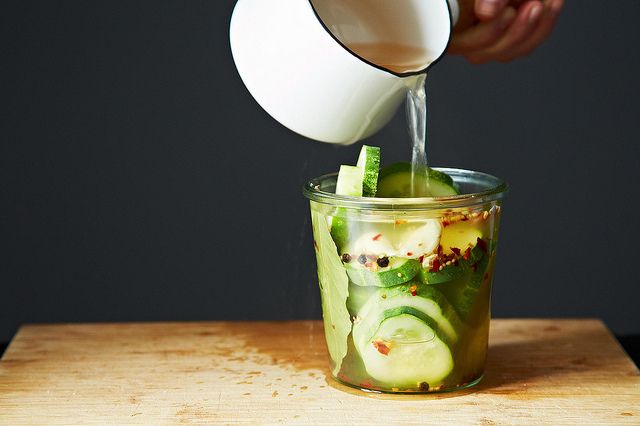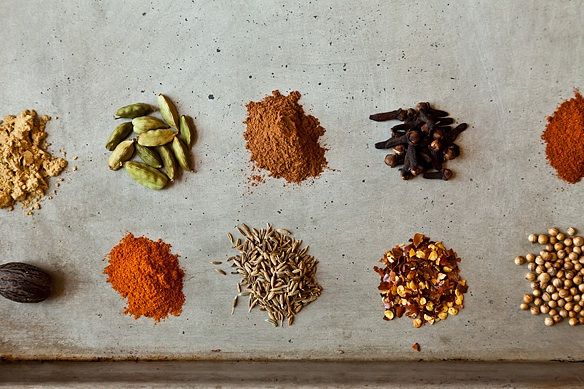Popular on Food52
14 Comments
Fred R.
January 5, 2015
A tip from Ruhlman for the amount of brine to make. Pack an jars with items, fill jars with water, empty water into measuring container, and figure how much vinegar/water mix equals that amount. Beats guessing every time.
Horto
July 8, 2014
some pickles call for heating brine, i make pickled red onions that way, does anyone know the difference?
ML
September 1, 2013
Would those of you making my mouth water share the vinegar etc. you used especially for the eggplant - I have tons of white and purple, both long and skinny depending on when harvested- and also the hot cucumber recipe. Thank you in advance!
Shelly S.
August 18, 2013
Silly question does it matter if when you are making pickles if its done refrigerated or not. Reading an easy way to start is by simply using old pickle juice which I always keep mine in the fridge but I thought when you brine something it was at room temp. Can I take cold pickle juice out of the fridge and it not go bad if that's the case.
William W.
November 10, 2013
If you're going to add vegetables to a brine, you don't need to have it at room temp. Just throw them in the jar!
Johnna
August 16, 2013
My favorite pickle is cucumber red hot pickles...been making them for years...old recipe handed down...never met anyone who doesnt want a jar...
Cheryl R.
August 16, 2013
Help! I need a banana pickle recipe. They are not the small size pickles... about inch round and one and a half inches long. I want them to have a slightly hot flavor.
Joerf48
June 25, 2013
Are any of you going to the Fancy Food Show at the Javitz enter starting Sunday?
aargersi
June 25, 2013
I am pickling blackberries right now - trying to reverse engineer them from a fancy restaurant so I can eat them on the cheap!!
HalfPint
June 25, 2013
I just pickled some eggplant. Very easy and the resulting pickle is beautifully purple (I left the skin on for texture) and the flavor is dynamite. Can't wait to make more for my friends. If you've got an eggplant hater, pickled eggplant might change his/her mind.
William W.
June 25, 2013
Great news! I've found that a lot of [insert name] vegetable haters are often swayed by a good pickle. What kind of eggplant did you use?
HalfPint
June 25, 2013
The smallish ,long purple variety that you get in a Korean grocery store. Can't call them Japanese since the longest one was no more than 6" long. I've grown the Japanese type before and they get really long, at least 12".
HalfPint
June 25, 2013
Here's a picture of the eggplants that I used.
http://www.davidkennardphotography.com/photos/2587-Harvested-Korean-Eggplants.xhtml
Guess there is such a thing as Korean eggplant.
http://www.davidkennardphotography.com/photos/2587-Harvested-Korean-Eggplants.xhtml
Guess there is such a thing as Korean eggplant.





See what other Food52 readers are saying.